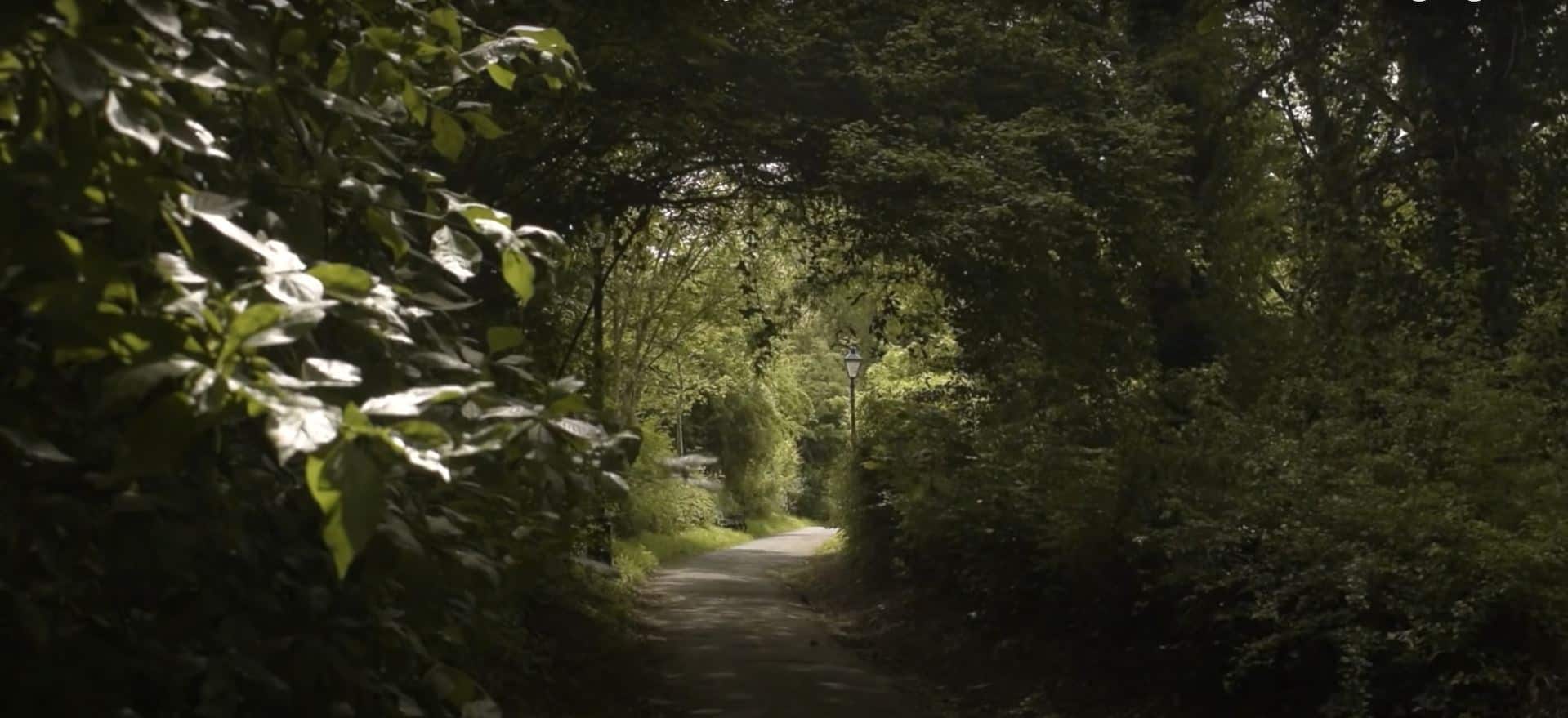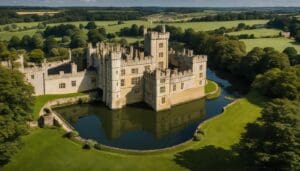Cabot Tower and Brandon Hill Bristol, England

Updated On: February 28, 2024 by Ahmed Samir
Bristol, a city steeped in history and culture, has many architectural wonders and natural beauties. Among its many treasures, Cabot Tower and Brandon Hill stand tall as a symbol of the city’s rich heritage and scenic splendour. Perched atop Brandon Hill, Cabot Tower offers panoramic views of Bristol and its surroundings, while the hill itself is a lush green oasis in the heart of the bustling city. In this article, we will explore the history, significance, and allure of Cabot Tower and Brandon Hill, inviting you to embark on a virtual journey through this Bristolian gem.
Cabot Tower and Bristol’s Maritime Legacy
Cabot Tower, a Grade II-listed building, holds a special place in the hearts of Bristolians and visitors alike. Its history is closely intertwined with the city’s maritime heritage and the legacy of a notable explorer. The tower was constructed in the late 19th century to commemorate the 400th anniversary of John Cabot’s voyage to the New World. John Cabot, an Italian-born explorer sailing under the English flag, set sail from Bristol in 1497 and is credited with discovering parts of North America, including Newfoundland.
The esteemed Bristol architect William Venn Gough designed the tower and built it between 1896 and 1898. It was officially opened to the public on 6 July 1897 to celebrate the 400th anniversary of Cabot’s voyage, with the ceremony attended by the then-Prince of Wales, who later became King Edward VII.
Cabot Tower’s Architecture
Cabot Tower’s architecture is a captivating blend of Gothic and Renaissance Revival styles, popular during the late 19th century. The tower stands at 105 feet (32 meters) and is constructed primarily of red sandstone quarried from the nearby Dundry Hill. Its striking appearance includes ornate detailing, pointed arches, and decorative motifs that pay homage to the historical period of exploration and discovery.
One of the most notable features of the tower is its octagonal shape, which is crowned by a copper dome. The tower’s design incorporates intricate stone carvings depicting scenes from John Cabot’s journey and other maritime themes. These embellishments add to the tower’s aesthetic charm and historical significance.
The tower’s interior, though not regularly open to the public, contains a spiral staircase with 108 steps that lead to a viewing platform at the top. This platform offers breathtaking 360-degree views of Bristol and the surrounding countryside, making it a popular spot for locals and tourists to enjoy Bristol’s scenic beauty.
Brandon Hill: A Natural Oasis
Cabot Tower may be the focal point, but Brandon Hill, on which it stands, is an integral part of the experience. Brandon Hill is Bristol’s oldest park, covering approximately 10 acres (4 hectares) of land. It provides a lush, tranquil escape from the hustle and bustle of city life, and its natural beauty contrasts beautifully with the urban surroundings.
The hill was initially named “Brandan’s Hill” in the medieval era, which is believed to be derived from the name of a hermit who lived there. Over the centuries, Brandon Hill has witnessed a variety of uses, including quarrying and grazing. It was acquired by the Bristol Corporation in 1174 and has since been transformed into the picturesque park we see today.
Flora and Fauna
Brandon Hill is home to a diverse range of flora and fauna, making it a haven for nature enthusiasts. The park features a variety of mature trees, including oak, ash, and beech, as well as several species of wildflowers. These create a vibrant tapestry of colour throughout the seasons, making it a popular destination for picnics, strolls, and outdoor gatherings.
Birdwatchers will also find Brandon Hill an excellent spot for observing local avian residents. Species such as blackbirds and robins can often be seen flitting among the trees, and the hill’s tranquil atmosphere makes it an ideal location for birdwatching.
A Peaceful Retreat
One of the most cherished aspects of Brandon Hill is its tranquil ambience. The park provides a serene setting for relaxation and reflection, making it a favourite spot for locals seeking solace amid the urban hustle and bustle. Whether taking a leisurely walk, reading a book on a bench, or simply enjoying a moment of quiet contemplation, Brandon Hill offers a welcome retreat from the city’s fast-paced life.
Historical Significance
Beyond its natural beauty, Brandon Hill has historical significance of its own. It was once the site of a Roman settlement, and remnants of ancient walls and ditches have been discovered on the hill. Additionally, the tower stands on the former Bristol Castle site, which dates back to the Norman period.
The Romantic Movement
Brandon Hill also played a role in the Romantic Movement of the 18th and 19th centuries. Poet Robert Southey, a contemporary of William Wordsworth and Samuel Taylor Coleridge, resided near Brandon Hill and was inspired by its natural beauty. His poetry often celebrated the landscape, contributing to the Romantic movement’s emphasis on the sublime and the picturesque.
The Observation Tower: Cabot Tower
While Brandon Hill has its own historical and natural charms, Cabot Tower is the Bristolian treasure’s crown jewel. As mentioned, the tower was built to commemorate John Cabot’s voyage to North America. Its construction was funded by public subscription, with a considerable portion of the donations coming from local Bristol merchants and entrepreneurs who recognized the significance of Cabot’s journey for the city’s maritime history.
From the top of Cabot Tower, visitors are treated to a mesmerizing view of Bristol and its surroundings. The tower’s strategic location on Brandon Hill provides panoramic vistas that stretch as far as the eye can see. On a clear day, you can spot landmarks such as the Clifton Suspension Bridge, the SS Great Britain, and the Bristol Channel.
A Symbol of Bristol’s Maritime Heritage
Cabot Tower serves as a poignant reminder of Bristol’s maritime heritage. During the 18th and 19th centuries, Bristol was one of the United Kingdom’s most important ports, engaging in trade with the New World and Africa. Ships sailing from Bristol played a vital role in the transatlantic slave trade and the exploration of new territories. The tower’s dedication to John Cabot and his journey to North America encapsulates this era of exploration and marketing. However, it is also essential to acknowledge the controversial and darker aspects of Bristol’s history.
Restoration Efforts
Over the years, Cabot Tower has undergone several restoration projects to preserve its historical and architectural significance. In 2007, the tower was closed for extensive renovations, which included repairing stonework, restoring the copper dome, and improving visitor facilities. These efforts ensured that Cabot Tower stood as a testament to Bristol’s heritage and offered a memorable experience to those who visited.
Local and Tourist Attraction
Locals love Cabot Tower and Brandon Hill and draw visitors worldwide. For tourists, a visit to the tower and the hill is often on the itinerary when exploring Bristol. Climbing to the top of the tower and taking in the panoramic views is an unforgettable experience, providing a unique perspective of the city.
Cultural Events
In addition to its historical and scenic significance, Cabot Tower and Brandon Hill host various cultural events and activities throughout the year. These include outdoor concerts, art exhibitions, and even yoga classes in the park. The park’s open spaces offer ample room for recreational activities, making it a versatile venue for community gatherings.
Local Engagement
For Bristolians, Cabot Tower and Brandon Hill hold a special place in their hearts. The park provides an accessible green space for residents to enjoy the outdoors, have picnics, walk their dogs, or simply relax in a peaceful setting. It is also a popular spot for fitness enthusiasts, with many using the hill’s slopes for running and exercise.
Local schools and educational institutions often incorporate visits to Cabot Tower and Brandon Hill into their curriculum, introducing students to the city’s history and natural environment. These educational outings help foster a sense of pride and connection to Bristol’s heritage among the younger generation.
Cabot Tower at Sunset
One of the most magical times to visit Cabot Tower is during sunset. As the day draws to a close, the tower offers a front-row seat to Bristol’s skyline bathed in the warm hues of the setting sun. The Clifton Suspension Bridge, the harborside, and the city’s landmarks take on a captivating glow, making it an ideal spot for photographers and couples seeking a romantic setting.
Local Legends and Folklore
Like many historical sites, Cabot Tower and Brandon Hill have their fair share of local legends and folklore. One such legend involves the ghostly apparition of a lady dressed in white who is said to wander the park, especially during moonlit nights. According to the legend, she is the ghost of a heartbroken woman who died of grief after her lover was lost at sea. While no concrete evidence supports these tales, they add an air of mystery and intrigue to the park’s history.
Community Involvement and Preservation
Preserving Cabot Tower and Brandon Hill is a collaborative effort involving various stakeholders, including local government, preservation societies, and community groups. The Friends of Brandon Hill, a volunteer organization, plays a significant role in maintaining and improving the park. Their efforts include conservation work, organizing events, and advocating for the park’s continued protection and accessibility to the public.
Future Plans and Enhancements
Bristol City Council continues to invest in preserving and enhancing Cabot Tower and Brandon Hill. Plans include:
- Improving visitor facilities.
- Enhancing accessibility for people with disabilities.
- Ensuring the continued preservation of the tower’s historic fabric.
These initiatives aim to ensure that future generations can enjoy this iconic Bristol landmark’s cultural and natural riches.
Conclusion
Cabot Tower and Brandon Hill are a testament to Bristol’s rich history, blending the architectural grandeur of the late 19th century with the natural beauty of a lush urban park. Together, they offer a multifaceted experience to residents and visitors alike, from breathtaking panoramic views to serene moments of reflection.
Cabot Tower’s dedication to John Cabot’s exploration reminds us of Bristol’s maritime heritage, while Brandon Hill provides a verdant oasis in the city’s heart. As Bristol continues to evolve, these cherished landmarks remain an enduring symbol of its past and a source of inspiration for its future. Whether you seek history, natural beauty, or a quiet escape from city life, Cabot Tower and Brandon Hill invite you to discover their timeless charm.






